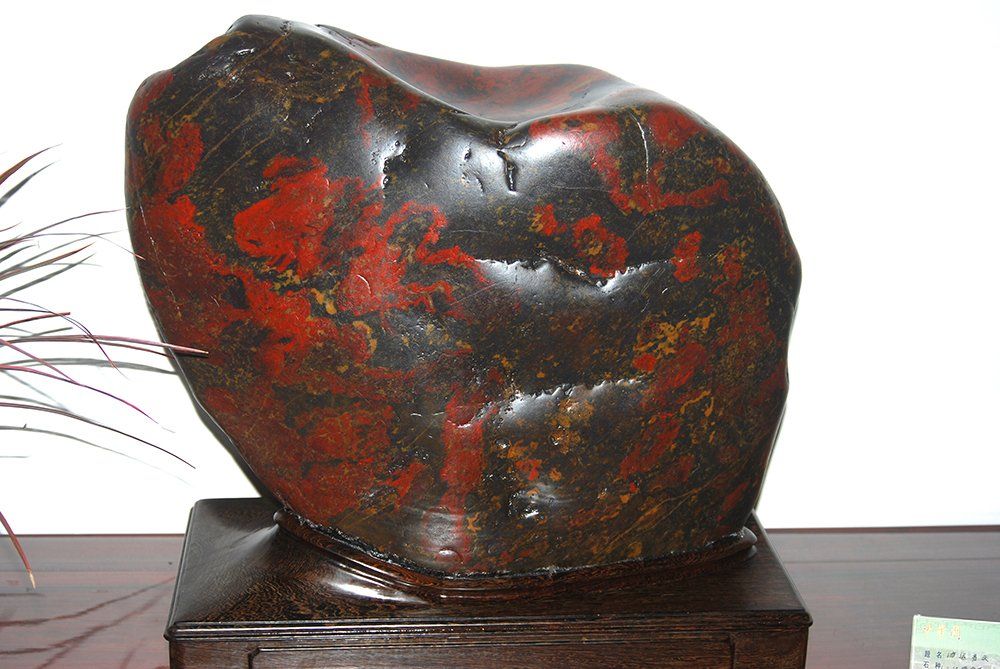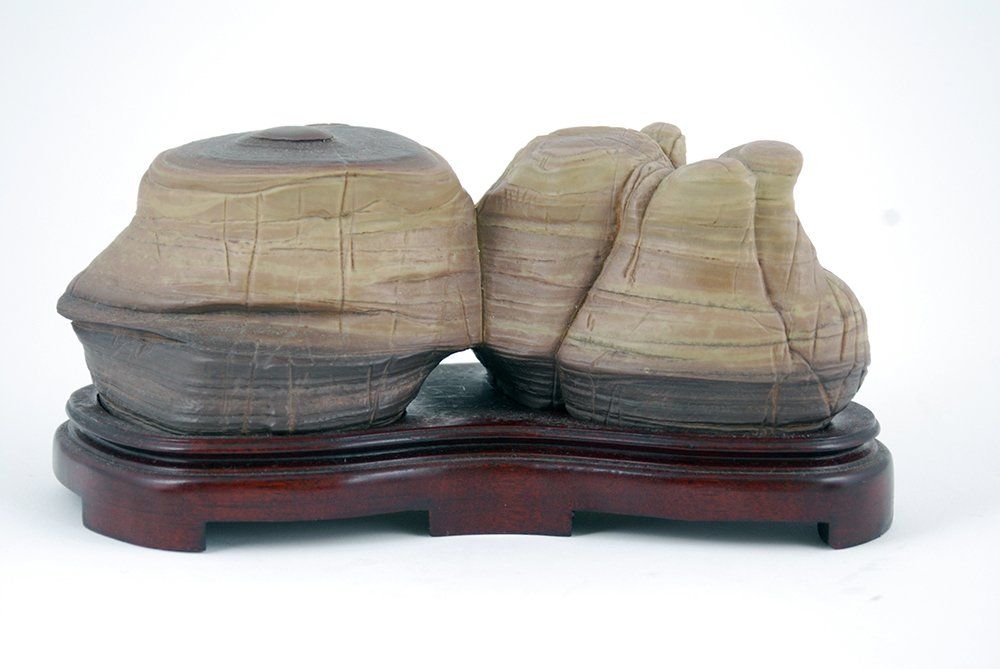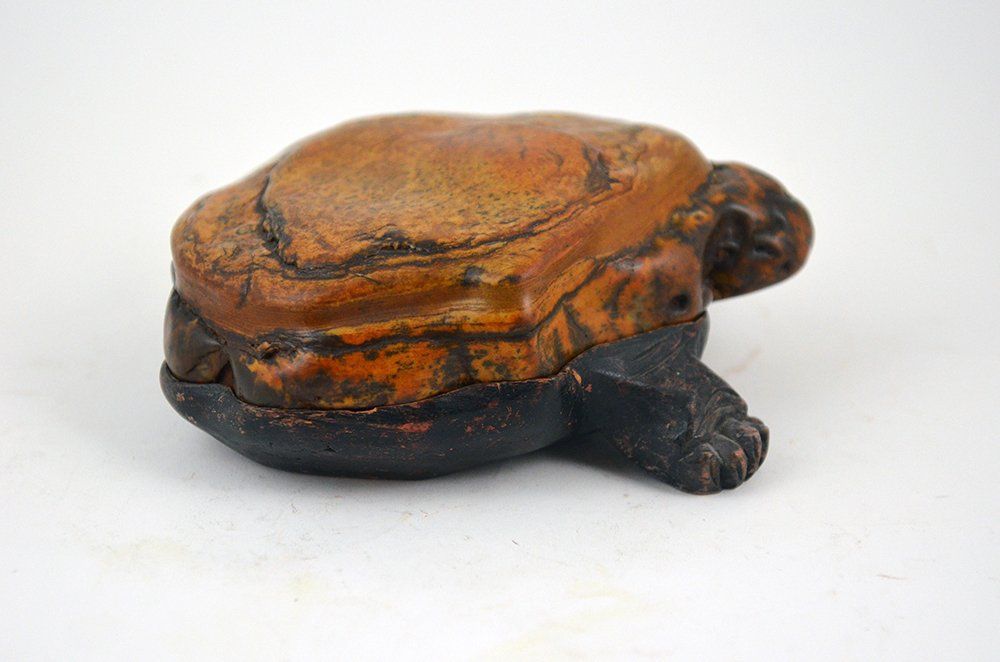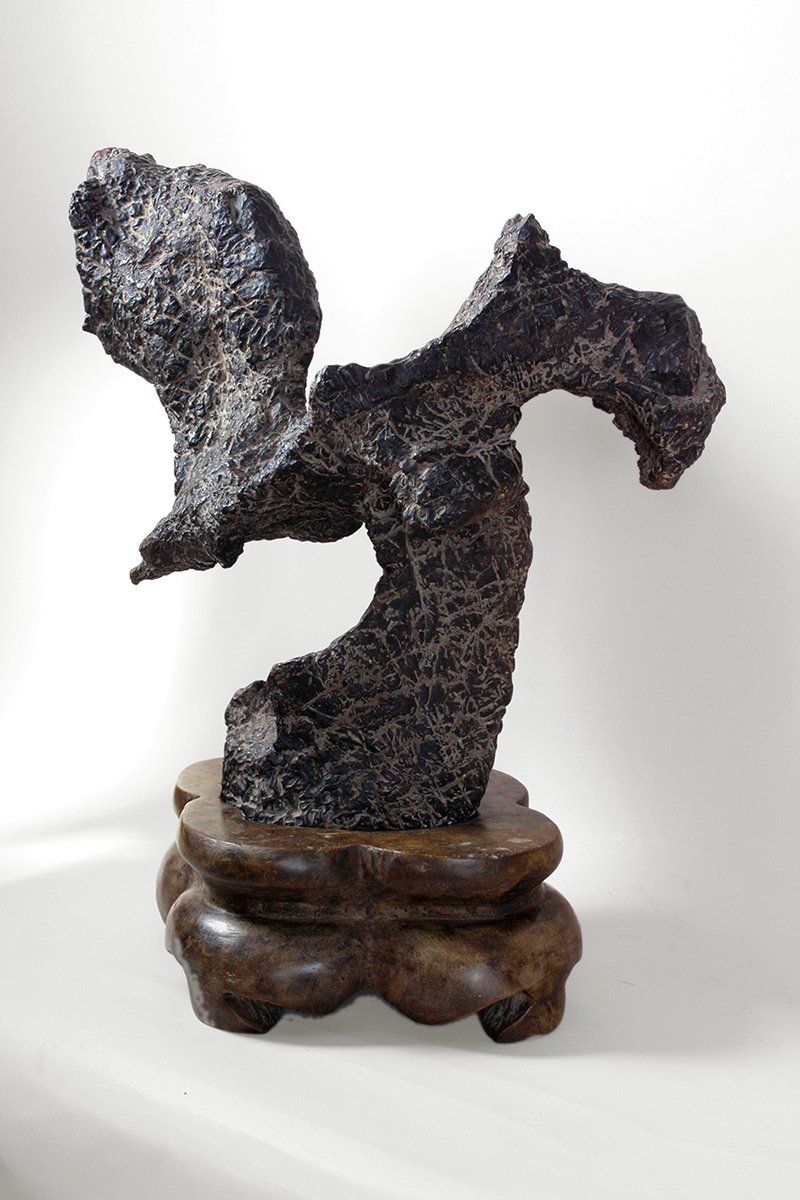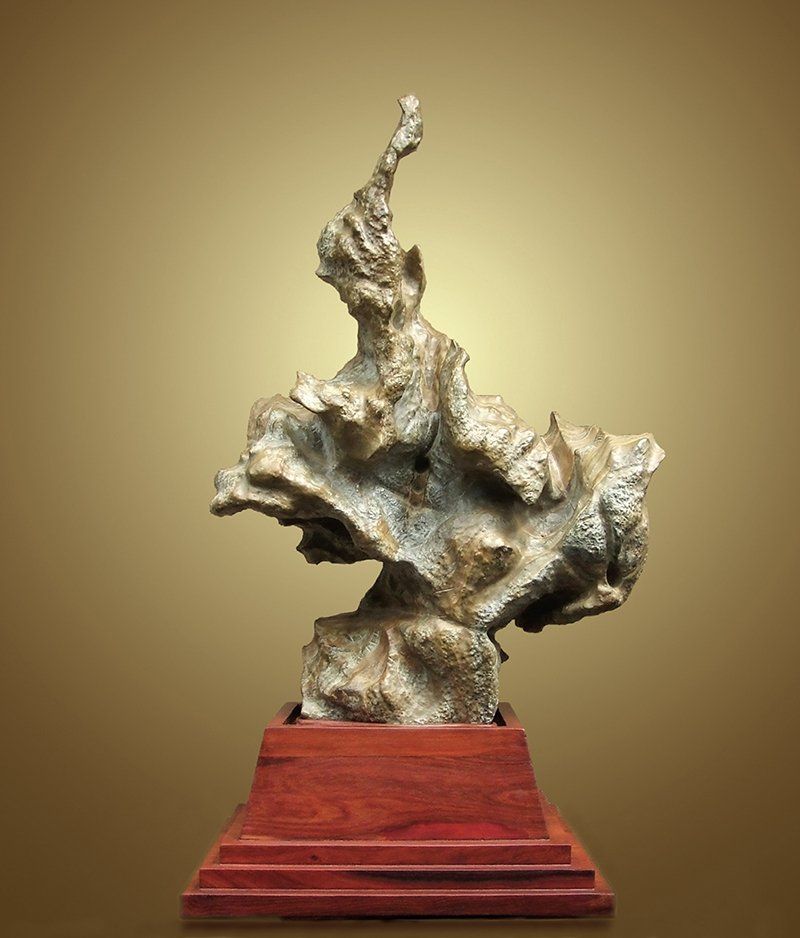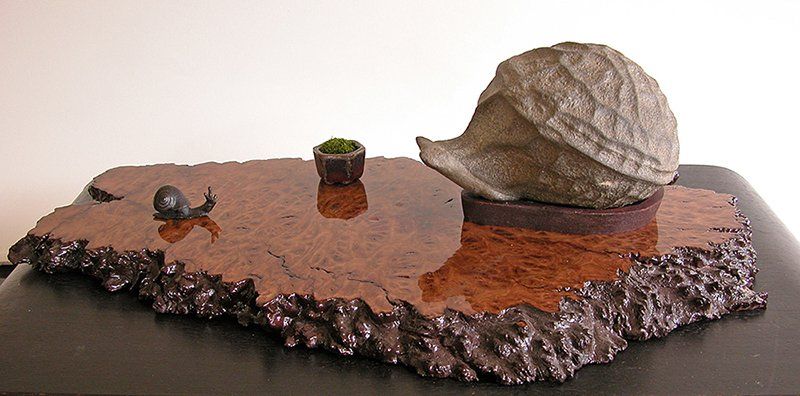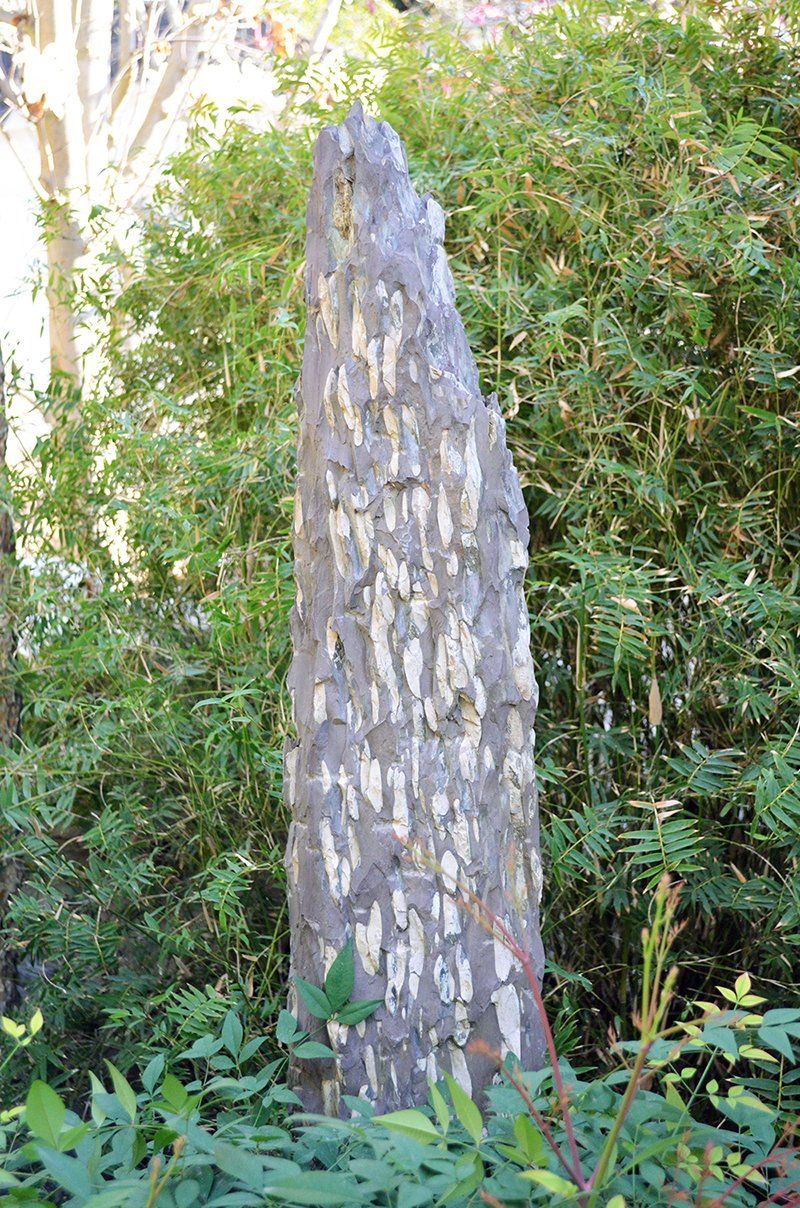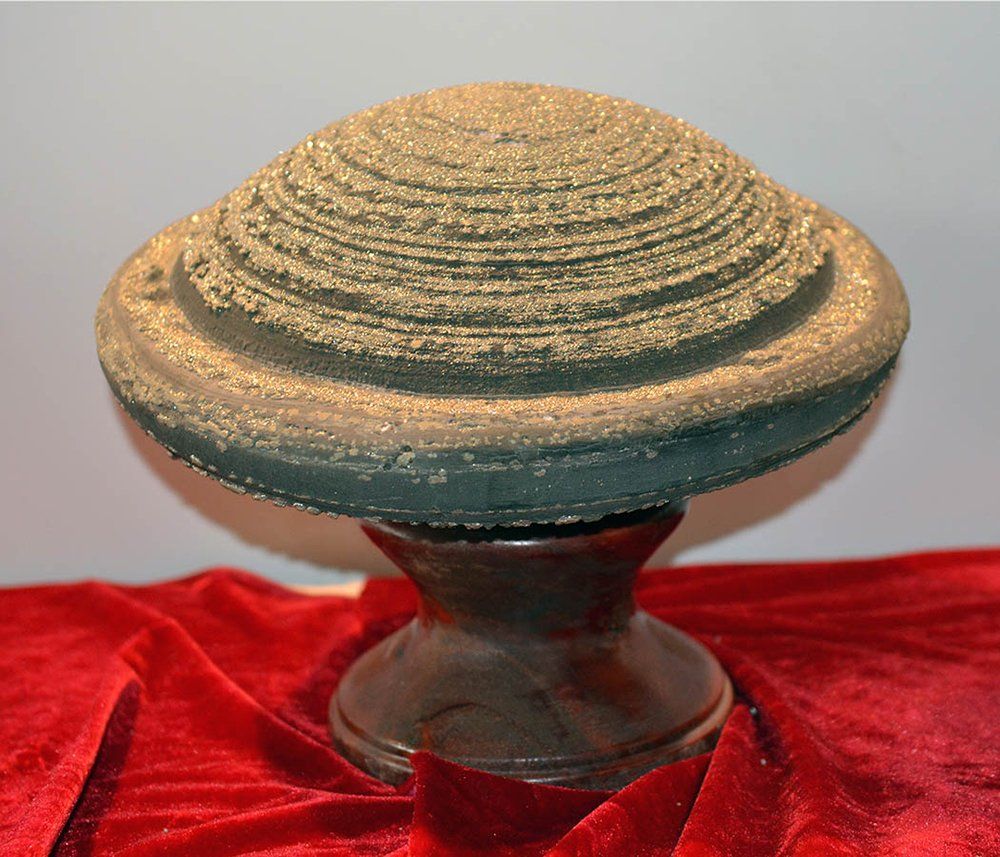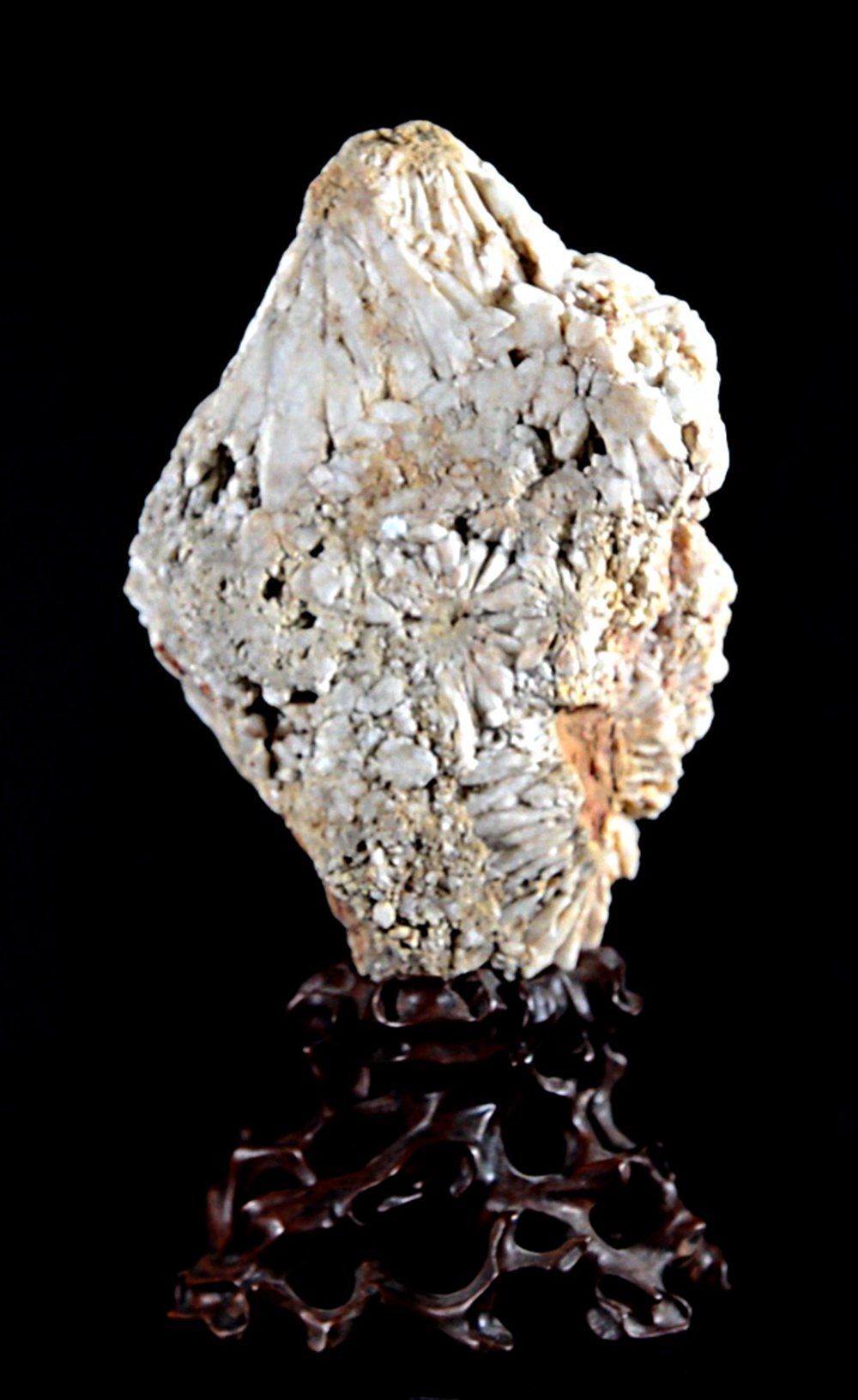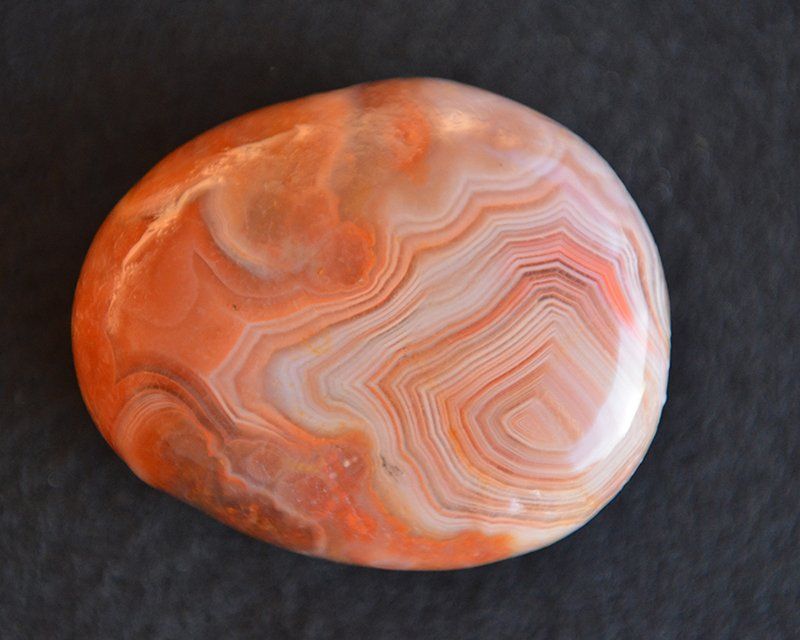Stone of the Month: October 2012 Sanjiang Stones (Three Rivers Stones)
Stone of the Month: October 2012 Sanjiang Stones (Three Rivers Stones)
These attractive river cobbles have been growing steadily in popularity among collectors of modern Chinese stones. While there is considerable variation among these stones, those with a dark background contrasting with a red pattern are more sought after and more highly valued. Some Sanjiang stones are almost completely red. It is not unusual to find other colors including brown, tan, and yellow in these stones, but their presence generally decreases the monetary value of the stones.
The stones originate from Sanjiang county in northern Guangxi province and are found in one of three rivers. They are considered to be metamorphic rocks composed primarily of chert, jasper, and iron oxides. A Sanjiang stone is very hard (6-7 on the Mohs scale), dense, and typically has a smooth surface from the constant abrading action of the rocky river bottoms in these fast flowing rivers.
These stones can be found in markets throughout southern China, but are especially plentiful in Guangxi province. They are completely natural and have not been worked. Some dealers will put a fine coat of Vaseline or mineral oil on these stones. This intensifies the colors which make them more attractive to some collectors. Other collectors, including ourselves, prefer the more subtle colors of the natural stones without an oil coating. The application of oil in China is often considered to be a preservation technique; however, we have not seen adequate documentation that this treatment actually preserves the stones.
In Guangxi province, the dark color—almost black—with bright red contrasting patterns is sometimes referred to as “Luizhou Black.” We have also seen a variety of high quality Sanjiang stone referred to as Guilin Chicken Blood Stone. These Guilan stones have beautiful, sharply contrasting colors, and composed of jasper and iron oxides. The true Chicken Blood Stones are quite different and have been used for over 300 years in China to make stone chops or seals and for viewing stones. The reddish colors of true Chicken Blood stones are composed of arsenic sulphate and have a completely different pattern (See Gallery Section for an example).
-
February 2012
ButtonLingbi Stone from Anhui Province
-
March 2012
ButtonSonghua (Pine Flower) Stone
-
April 2012
ButtonDahua Stones from Guangxi Province
-
May 2012
Button"Mountains All in Sight" Wen Stone
-
June 2012
Button"Heritage" Lingbi Stone from Anhui Province
-
July 2012
ButtonYadan Stone "The Snail"
-
August 2012
ButtonBamboo Stones from Zhejiang Province
-
September 2012
ButtonIron Stones from Yunnan Province
-
October 2012
ButtonSanjiang Stones (Three Rivers Stones)
-
November 2012
ButtonHuadu Chrysanthemum Stone
-
December 2012
ButtonRain Flower Stone

